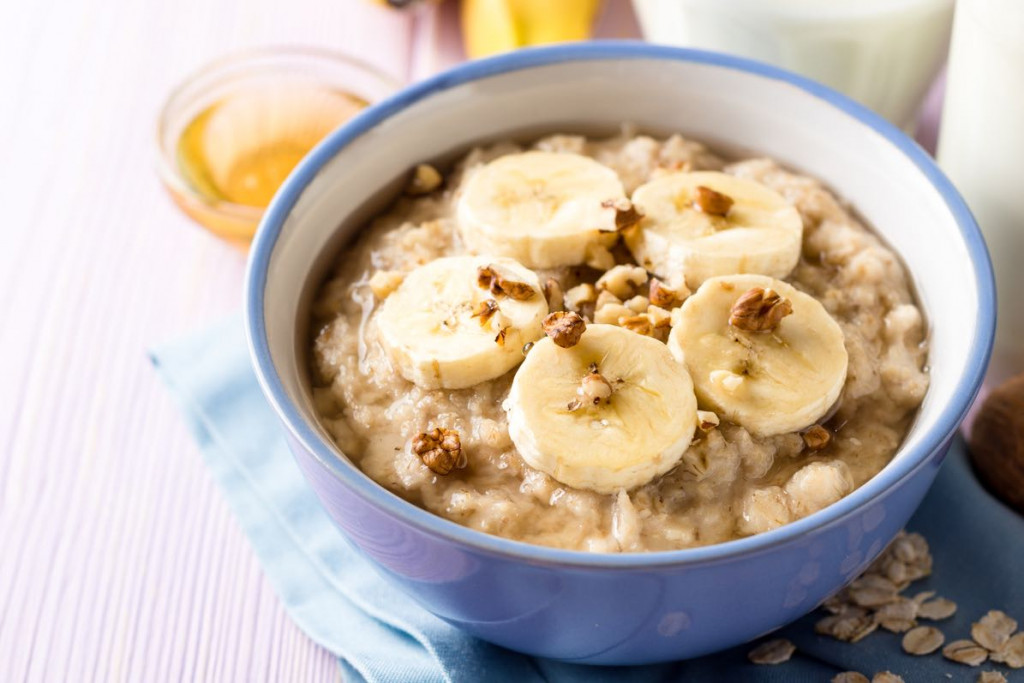3 Changes to Make to Your Diet While Training for the Broad Street Run
Optimize your running diet, with help from these tips from OnPoint Nutrition.

Photography by iStock/Andrey Zhuravlev
It’s that time of year again: Time to train for the Broad Street Run. Hopefully by this time, you’ve started running — or at least, like, found your running shoes.
Related: Your Broad Street Run Training Plan
But while logging miles is definitely important — the more the merrier, really — how you spend the other 23 hours a day when you’re not training is also important. That’s why the team at OnPoint Nutrition has put together an eight-week nutrition plan to really help you optimize your meal times. Abs — and good runners — are made in the kitchen, after all.
You can sign up for the full nutrition plan here — including meal and snack suggestions and meal timing guidelines. But to give everyone a jump on designing a meal plan that’ll support their Broad Street goals, we asked OnPoint Nutrition founder Britney Kennedy to share her tips. Read on for her advice as you increase your weekly mileage.
Embrace Those Carbs
Yes, you read that right. Carbohydrates are your friend — especially in the context of proper macronutrient ranges. If you’re not big on counting calories, focus on your macronutrients instead, suggests Kennedy — that means the percentage of your daily calories that come from carbs, protein, and fat.
As you training progresses, Kennedy recommends the following macronutrient breakdown:
60-70% Carbohydrates (bread, pasta, beans, etc.)
15-20% Protein (chicken, turkey, fish, tofu, etc.)
20-30% Fat (avocado, nuts, healthy oils, etc.)
“We know what you’re thinking — 70 percent carbs? No way! Our bodies use carbohydrates to make glucose, which is our main energy source,” says Kennedy. “As you progress in your training think: More energy, more carbs — but don’t use this as an excuse to eat whatever you want! Quality of foods is just as important as quantity. Our bodies run best on high quality, whole foods.”
Time Your Meals Well
“Replenishing glycogen stores is the number-one priority after a workout. Your maximum uptake of glucose is just about 30 minutes after your run,” says Kennedy, who recommends opting for post-run snacks that combine carbohydrates and protein.
“We suggest incorporating a few of the following into your post-run rituals:
- 1 slice whole wheat toast (carbohydrate), peanut butter (protein) plus 1 tbsp. fruit preserves
- ¼ cup granola (carbohydrate) and non-fat Greek yogurt (protein)
- 1 banana (carbohydrate) and 15 to 20g high-quality protein shake (protein)
- 1 apple (carbohydrate) and about 15 whole-wheat crackers (carbohydrate), plus 1 to 2 oz. reduced fat cheese (protein)
- chocolate milk (carbohydrate and protein all packed in one)”
After snacking Kennedy suggests having a meal a half-hour to an hour later that follows the macronutrient breakdown above. Plus, make sure to drink a lot of water so you don’t fall prey to dehydration.
Experiment with Your Pre-Run Breakfast
There’s nothing worse than trying out some new gel or bar or bowl-of-whatever the morning of a race, only to spend every mile in miserable, gastro-intestinal distress. That’s why Kennedy suggests auditioning different 300 to 500 calorie breakfasts during your training runs to see what works best for you.
“Your breakfast should be filling, but not too much that it leaves you feeling weighed down. Always avoid high fat foods pre-run,” says Kennedy.
Kennedy’s favorite pre-run breakfasts include a half to a full cup of oatmeal with a banana, or a half a bagel or a slice of wheat toast with peanut butter. Whatever you do, though, Kennedy recommends avoiding anything with high fiber, dairy, and artificial sweeteners.
Want more nutritional guidelines for your race-day prep? Check out the eight-week plan here.
Like what you’re reading? Stay in touch with Be Well Philly—here’s how:
- Like Be Well Philly on Facebook
- Follow Be Well Philly on Instagram
- Get the Be Well Philly Newsletter
- Follow Be Well Philly on Twitter


